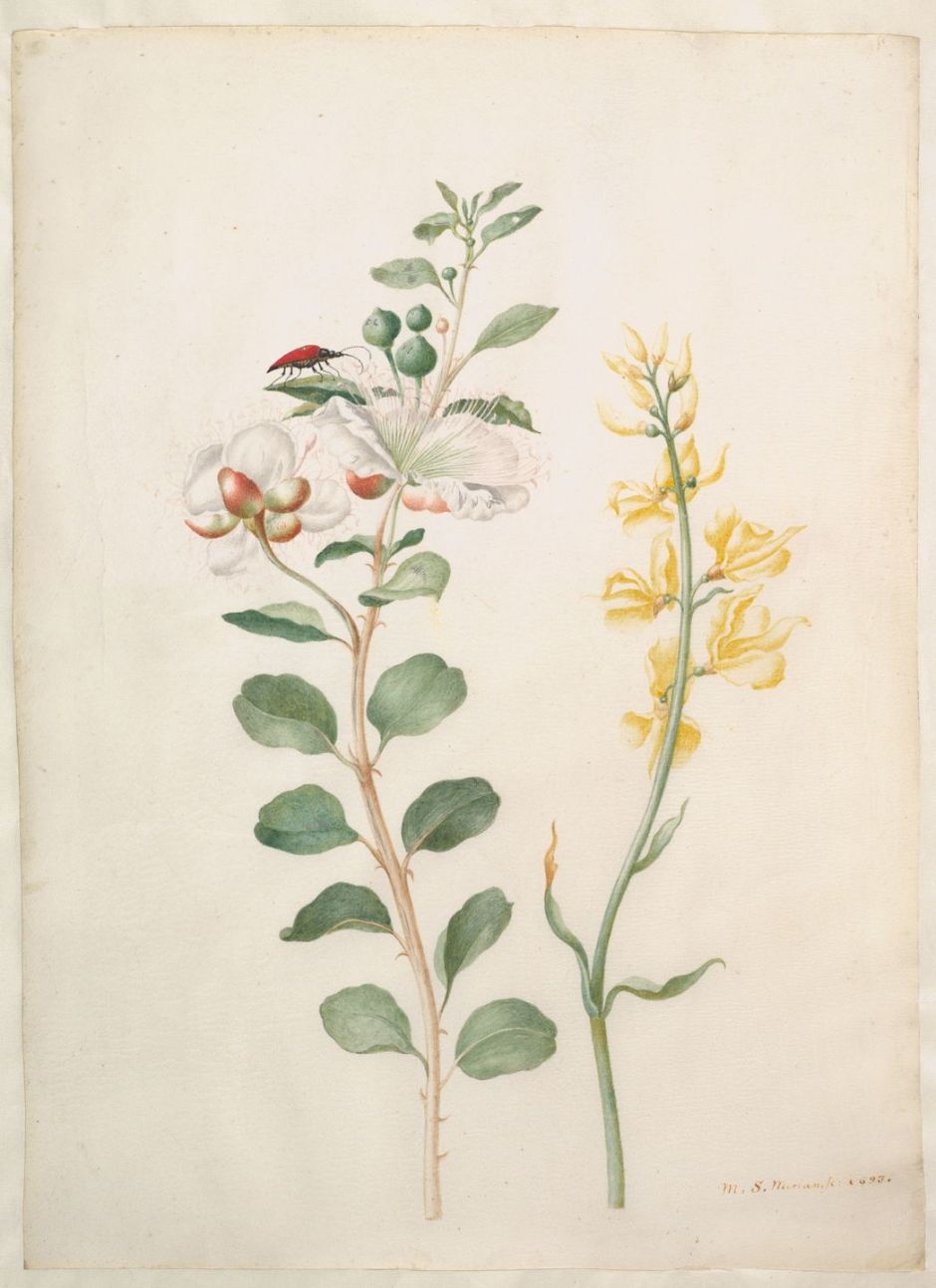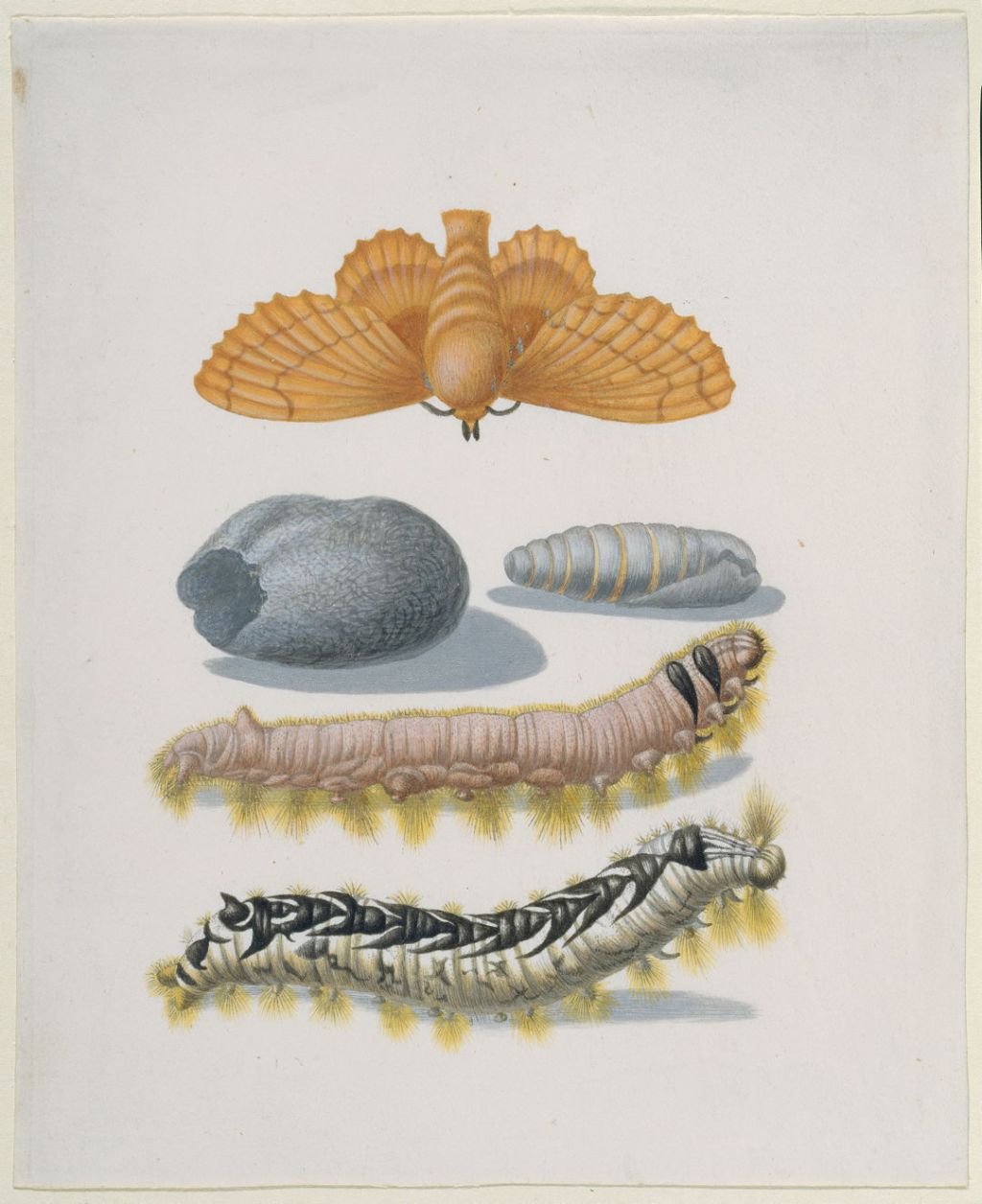This week’s expeditionary painter is one of the most remarkable in art history. Not only was Maria Sibylla Merian (1647–1717) a fine artist, as you will see, but she was a leading entomologist who transformed the way we understand the life cycles of insects. Before she painted those, widespread belief was that insects were creatures born by spontaneous generation from mud, and few understood how caterpillars metamorphosed into butterflies and moths. This changed because of Merian’s painstaking work observing live insects, piecing together their life cycles, then expressing those in the most superb paintings.
As if that wasn’t enough, she travelled to the former Dutch colony of Surinam, in the north of South America, now part of the Republic of Suriname, where she painted a huge catalogue of insects, plants, and other living organisms.
She came from an artistic family: her father was an engraver and publisher, and after his death when Merian was still a toddler, her mother married Jacob Marrel (1613/1614–1681), who painted floral and other still lifes. She was trained as a child, and was painting her first insects by the age of 13. She started with silkworms in her home town of Frankfurt in Germany. She married her father’s apprentice when she was eighteen, and the couple had their first child in 1668, after which they moved to her husband’s home town of Nuremberg, where she started teaching young women to paint.

Her stepfather Jacob Marrel painted this Portrait of Maria Sibylla Merian in 1679.

Merian appears to have made paintings intended as fine art in their own right, including this Still Life with Fruit, a Grasshopper and a Butterfly which she’s thought to have painted during the 1670s. There’s no sign yet of any insect lifecycles, metamorphoses or insect-plant relationships.

Her life’s work was using her art to demonstrate the life cycles of different insects. This is the title page of the first volume of her first book, loosely translated as The Metamorphosis of Caterpillars and their Diet, which was published in 1679.

Its first plate shows the fruit and leaves of the mulberry tree, and the eggs and larvae of the silkworm moth which depended on it. At this stage, she was content to bring together images of different stages in the moth’s lifecycle.

She painted this watercolour of the Metamorphosis of the Lappet after 1679. Vellum was her preferred ground for her watercolours, and has preserved her fine detail and rich colours.

She followed that with The New Book of Flowers in 1680, for which this is the title page.
Her marriage proved unhappy, and she left her husband and moved in with her widowed mother in 1681, accompanied by her daughters.

The second volume of her Metamorphosis of Caterpillars and their Diet seems to have been published in 1883. This Plate 44 shows an acacia together with the lifecycle of the silkworm moth, and a magnificent swallowtail butterfly.
By this time, Merian’s feet were itching to travel. She first went on trips around Germany as she started to spread her wings. These took her to Friesland in the Netherlands, where she lived with a Labadist religious community with the rest of her family, between 1685-91. Her mother died in 1690, and her husband divorced her two years later. She now lived in Amsterdam, where one of her daughters married a merchant specialising in trade with the colony of Suriname.

Merian proved a successful artist with paintings such as this watercolour Study of Capers, Gorse, and a Beetle from 1693. But she then decided that she wanted to travel to Suriname to study and paint its insect life. She was given permission to do that in 1699, and now aged fifty-two, she and her daughter set sail for South America that year.
Reference
Wikipedia which has links to other sites featuring her published work.

